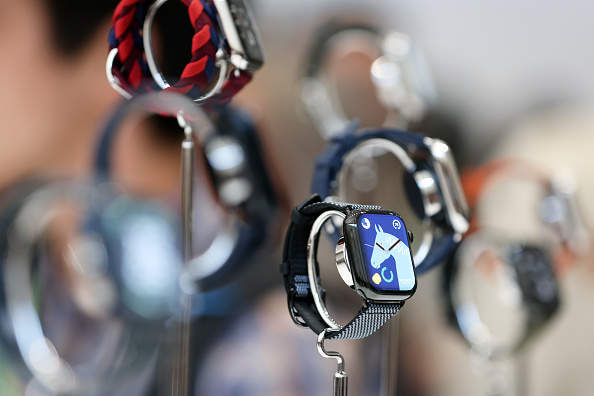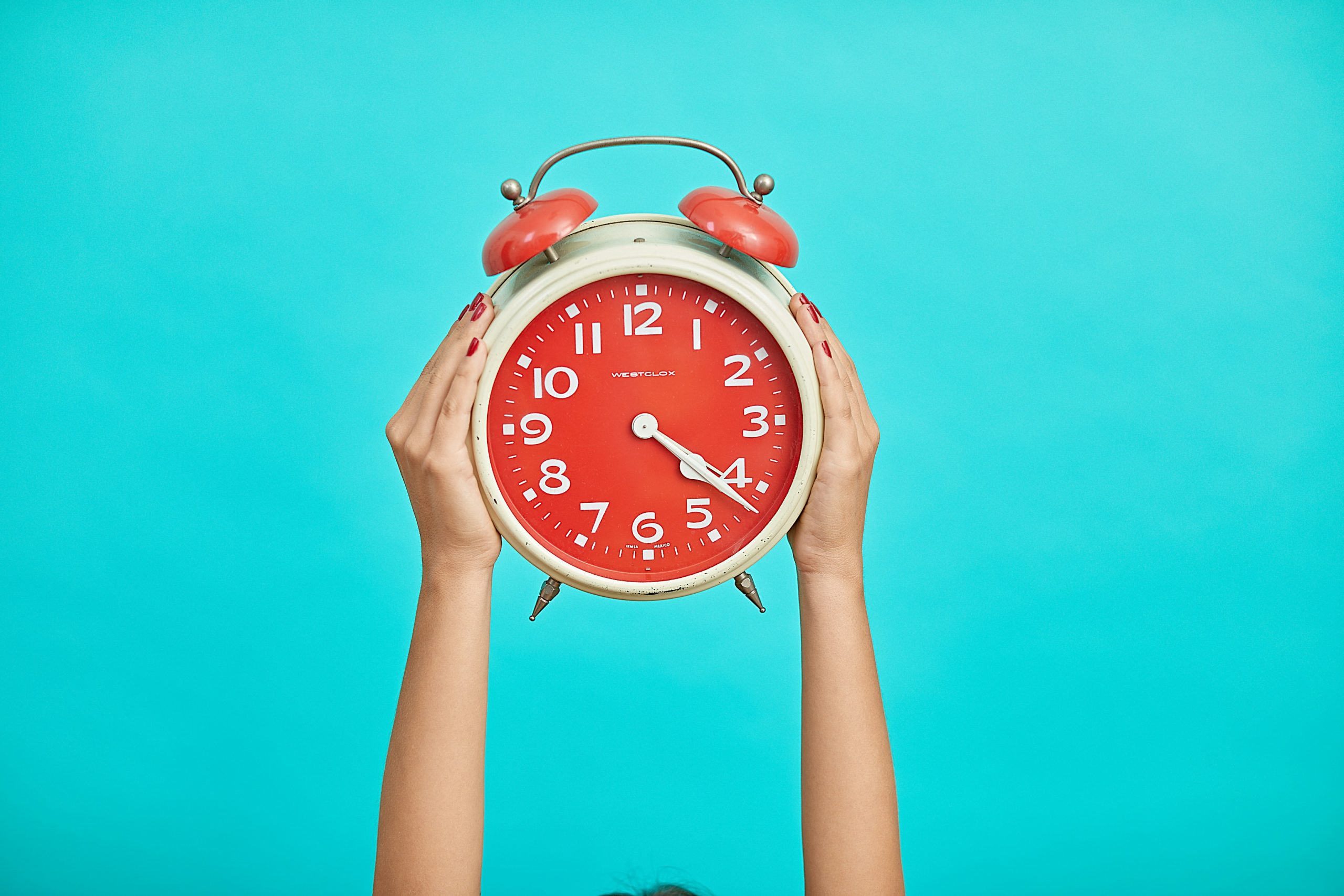Apple Watch Series 9 Review: Why the Watch Isn’t as Useful as It Could Be
It has a new double-tap feature and brighter screen, but latest model has same battery life the watches have had since 2015: 18 hours
If you asked me, “Should I upgrade my Apple Watch to the Series 9 this year?” I’d probably say no.
It’s a fine watch. It’s just not much better than the Series 8, which you can get cheaper, even refurbished right from Apple.
I have been testing the $399-and-up Series 9 for nearly a week. Available on Sept. 22, it includes a few upgrades, including a one-handed, double-tap gesture and a brighter screen. Apple says one version of it—the aluminum case with Sport Loop band—is carbon neutral.
Many things, though, remain unchanged from last year’s, including the health sensors and design. I’m most grumpy about the battery life. Back in 2015, Apple promised 18 hours. Today, Apple promises…18 hours. Eight years and a dozen models later, we still need to charge these watches daily.
The Apple Watch is the bestselling smartwatch in the world, but battery life is where competitors such as Garmin still have an edge. It’s what holds the Apple Watch back from true all-day/all-night/all-weekend usefulness.
Double tap and new features
The improvements to the Series 9 are internal, enabling new features that are nice-to-haves. There are no game-changers.
Double tap: The new watch senses when you pinch your thumb and index finger twice, in quick succession. The gesture triggers an action that varies depending on what you’re doing. If you’re playing a song, you can double-tap to pause or skip. For incoming texts, it starts a reply with voice dictation. For calls, it picks up the phone. For timers, it dismisses the alert.
Double tap will come in an update rolling out next month. It’s useful for one-handed operation, while you’re holding on to a subway pole or cup of coffee. It also works while you’re wearing gloves.
A similar accessibility feature called AssistiveTouch is available on Series 4 models and newer. You can even double-pinch to dismiss notifications. In my tests, AssistiveTouch wasn’t always as responsive as double-tapping on the Series 9, but if you already have an Apple Watch, it’s worth enabling.
Offline Siri: Apple’s voice assistant can now process some queries faster and more accurately, because it doesn’t need to send the request to the server over Wi-Fi or cellular. You can set timers—even multiple timers in the WatchOS 10—almost instantaneously.
Brighter screen: The display goes up to 2,000 nits, up from 1,000 nits last year. If you don’t speak nits, that translates to a screen that’s easier to see outdoors on a sunny day. Its dimmest setting is also lower, way down to one nit. The Apple Watch adjusts screen brightness automatically based on ambient light, so the brighter screen isn’t noticeable in most settings.
Precision iPhone finding: I use my Apple Watch’s Find My iPhone ping basically every day, so I thought I’d like precision finding. When you’re within about 30 feet of the iPhone, you can see its distance and direction—similar to an AirTag. It’s nice for those who might be unable to hear the audible ping triggered by older models, but that never failed me. And this trick only works with an iPhone 15 model.
Stalled battery life
In its quest to make the smartwatch a jack-of-all-trades wearable with a high-resolution, multitouch screen, Apple has sacrificed battery life. The new S9 processor is 25% more power efficient than last year’s model. But over the years, the company has added more sensors, brighter screens and other energy-sucking elements.
During the watch’s recent unveiling, Deidre Caldbeck, the director of Apple Watch product marketing, highlighted the company priority: “This powerful custom silicon is what allows us to maintain all-day 18-hour battery life while adding new features and systemwide improvements.”
Garmin wearables, meanwhile, have lower-resolution displays that can last days. Some models have solar panels embedded in their watch faces, and can last weeks. It’s something I’m painfully reminded of every time I forget my Apple Watch charger on a weekend trip. Cue the gloating by my Garmin-wearing husband, who never brings his charger.
Apple often touts the watch’s health-tracking capabilities in marketing materials. For this to work, though, it has to be on your wrist—even at night, while you sleep. That’s tough when it needs to be charged once a day.
Charging wouldn’t be as problematic if the Apple Watch didn’t need its own proprietary puck to power up. (Garmin’s new Vivomove Trend is one of the first to work with standard Qi wireless charging.)
I’m not saying Apple Watches are useless without default multi day battery life. I wear mine so often that I have a squircle-shaped tan on my wrist. But a battery-life quantum leap is needed.
That could be coming next year. The Apple Watch was announced 10 years ago next fall, and that anniversary could mean a big redesign. According to a Bloomberg report, a new band system could make room in the watch’s case for more sensors—or, I hope, a bigger battery—and a switch to a more energy-efficient microLED display could lead to power gains.
How to get longer battery life
If you want the longest battery life right now, there’s the $799 Apple Watch Ultra. It lasts a day and a half by default. But even the new, modestly upgraded model is a bulky chunkster, especially on smaller wrists. Anyone else looking for a big Apple Watch change should wait until 2024.
Meanwhile, you can temporarily double the battery life by taking away power-draining features.
• Enable low-power mode: You can quickly enable low-power mode for set periods. Press the side button to open the Control Center, then tap on the battery percentage and scroll down.
Just beware: It does disable some of the lifesaving heart-rate notifications and the power-hungry always-on display. When double tap is available, low-power mode will also disable that gesture.
• Reduce workout sensor readings: Go to Settings > Workout, then tap Fewer GPS and Heart Rate Readings to enable. When in low-power mode, the watch won’t capture GPS or heart-rate data as frequently during outdoor workouts, further extending battery life.
You can also disable some functions. I managed to squeeze 48 hours out of the Series 9 by turning off the most battery-intensive ones, but it’s a trade-off:
• Double tap: When the feature rolls out to Series 9 models next month, you can turn it off. Go to Settings > Gestures > Double Tap to disable.
• Always-on display: Go to Settings > Display & Brightness. Tap Always On to disable.
• Background app refresh: Go to Settings > General. Scroll down to Background App Refresh to disable entirely or turn off for certain apps.
• Reduce display brightness: In Settings > Display & Brightness, you can adjust the default setting.
 Copyright 2020, Dow Jones & Company, Inc. All Rights Reserved Worldwide. LEARN MORE
Copyright 2020, Dow Jones & Company, Inc. All Rights Reserved Worldwide. LEARN MORE
This stylish family home combines a classic palette and finishes with a flexible floorplan
Just 55 minutes from Sydney, make this your creative getaway located in the majestic Hawkesbury region.
Working a regular day, even into the evening, is for mere mortals. Those out to impress start well before dawn.
As a competitive rower in my long-ago prime I sometimes used a racing strategy called fly and die. Sprinting to an early lead often yielded a fast overall time, even if I couldn’t hold my torrid pace through the finish line.
Some professionals take a similar approach to their desk jobs, starting their workdays with a 5 a.m. to 9 a.m. shift. They are up before the sun—and, more important, before their co-workers—to get a jump on the workday and impress the boss.
Nothing screams go-getter like a predawn email! Getting stuff done early allows them to clock out midafternoon and still look like stars, even if their routines require Ben Franklin-esque sleep schedules and vats of caffeine.
Melissa O’Blenis rises by 4:30 a.m. for prayer and Peloton time before starting her job at the digital consulting firm Argano.
“I just love checking things off my list,” she says. “I need that focus time away from Teams messages, email notifications and text alerts.”
A mother with two sets of twins, O’Blenis, 48, often breaks for her kids’ afternoon sports without feeling guilty or judged. Colleagues jokingly call her Granny because her 9 p.m. bedtime makes the early starts possible. But Granny got the last laugh when she was promoted to a director-level role in March.
More than 90% of knowledge workers want to flex their hours, according to surveys by Slack’s Future Forum . In the pandemic many of us got in the habit of handling personal commitments during standard business hours, then catching up on work tasks later .
Now that the office battle is largely over, fighting a return to rigid, 9 a.m. to 5 p.m. schedules might be workers’ last stand. But managers complain about afternoon dead zones when employees are out of pocket.
The solution for more workers is starting sooner instead of finishing later. Workflow software maker Asana reports that 21.4% of users are logging on between 5 a.m. and 9 a.m. this year, up from 19.8% in 2021. About 12% of work tasks are completed before 9 a.m., the company says, compared with 10% before the pandemic.
Early-bird bosses
Gibran Washington and his basketball teammates at Hofstra University used to run at 6 a.m. He maintained his early wakeups while climbing the ranks in food-and-beverage management.
By 9 a.m. meetings, he had already exercised, meditated and put in a couple of hours of work.
“I always found myself more prepared than my colleagues who hadn’t had their first cup of coffee yet,” says Washington, 40, who doesn’t drink coffee. Now he is chief executive of Ethos Cannabis, a chain of 12 dispensaries in three states, and rises as early as ever.
Waking and working ahead of the pack is a common CEO habit, from Apple ’s Tim Cook to General Motors ’ Mary Barra . Even if your ambitions are less grand than the corner office, starting early could help you stand out for one simple reason: The boss is probably up, too, and taking notice.
Matt Kiger says being the first one into the office helped him catch his manager’s eye and advance after changing careers from education to media sales. He would set his alarm for 5 a.m., hop a train from Connecticut to New York and be at his workstation before 7.
“I thought, ‘What is it going to take to break through?’” he recalls. “‘It’s going to take being there when my boss comes in, already at my desk making phone calls.’”
Now a senior vice president for digital sales at Townsquare Media , Kiger, 47, says much of the daily communication among company leaders happens by text and phone from 6 a.m. to 8 a.m. It’s possible to succeed as a night owl, he says, but people who sleep in risk missing a window when many executives are awake and accessible. While some working parents can’t swing early-morning meetings, others like Kiger say they are the key to being present at kids’ after-school activities.
Getting the worm
Matt Sunshine—whose surname surely predestined him to be a morning person—wakes at 5:30 a.m. to read the news. Then he cycles or takes a Pilates class and is on his computer by 7.
Sunshine is CEO of the Center for Sales Strategy in Tampa, Fla., which helps healthcare, media and professional-services companies generate leads. He doesn’t expect his 55 employees to follow his schedule but says it becomes progressively harder to get his attention as the day goes on and his calendar fills up with meetings. He also tries to log off by 5:30 p.m. for family time, so working after hours won’t necessarily make an impression.
“If you want to get my attention, a good time to get me is first thing in the morning,” Sunshine, 55, says. “Because people know I’m an early riser, I think that does influence other people to do the same.”
Elvi Caperonis’s morning routine is next-level organised. Her alarm rings at 6 a.m. She goes for a run at 6:30. At 7 she showers and eats breakfast. At 7:30 she opens her laptop and sets a timer for 25 minutes. That’s her first block to focus on the most important task of the day before a five-minute break. She repeats the on-off work pattern throughout the day.
Caperonis, a technical program manager at Amazon , makes a daily to-do list with nine items. She rates one critical, three medium-level and five lower-priority. This helps her work efficiently and in the right order.
The 41-year-old works from home in Florida and often picks her daughter up from school at 2:30 p.m., freedoms she has preserved partly by being highly productive early in the day, she says. Much of her job involves identifying potential risks to a project’s success, and when she sends an early-morning alert it arrives really early for company leaders in the Pacific time zone.
“They appreciate having that information first thing when they open their email,” she says. “In my experience, leaders are also early birds.”
This stylish family home combines a classic palette and finishes with a flexible floorplan
Consumers are going to gravitate toward applications powered by the buzzy new technology, analyst Michael Wolf predicts























